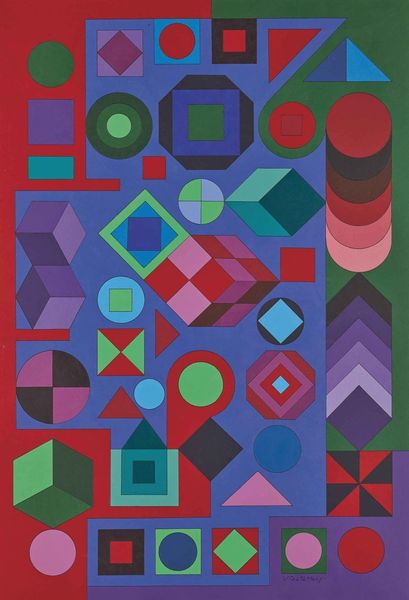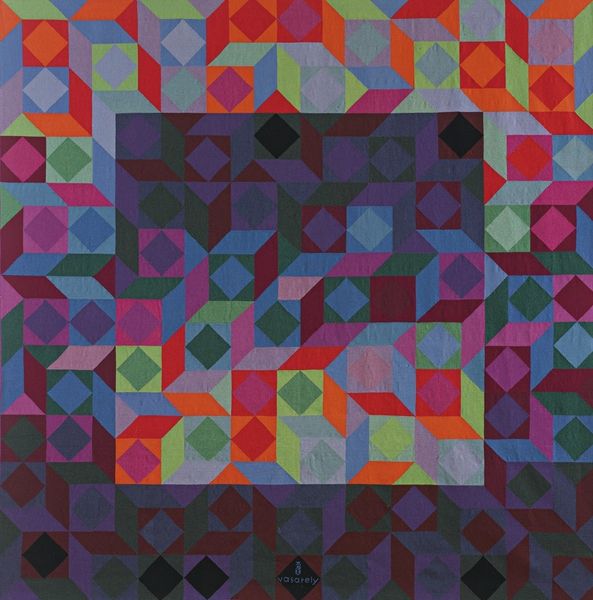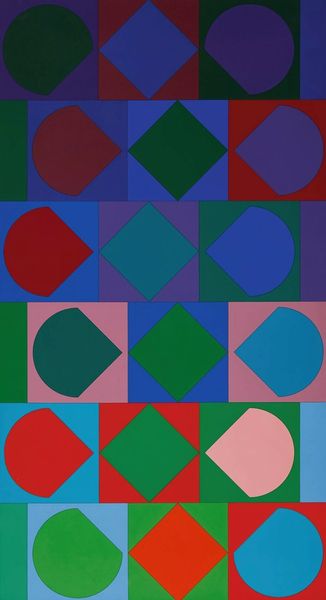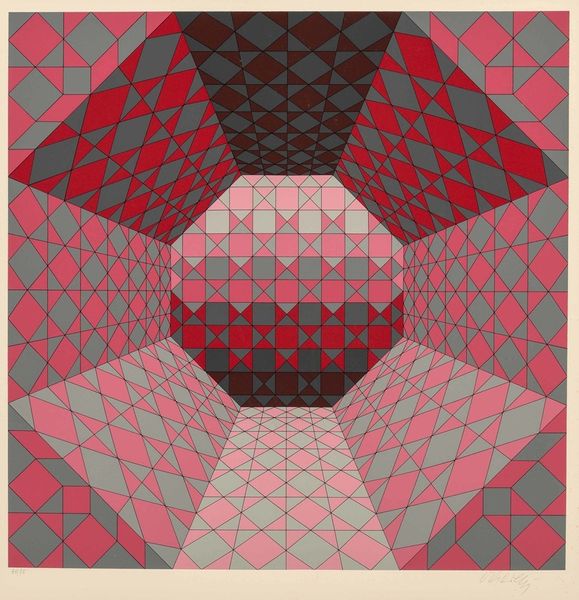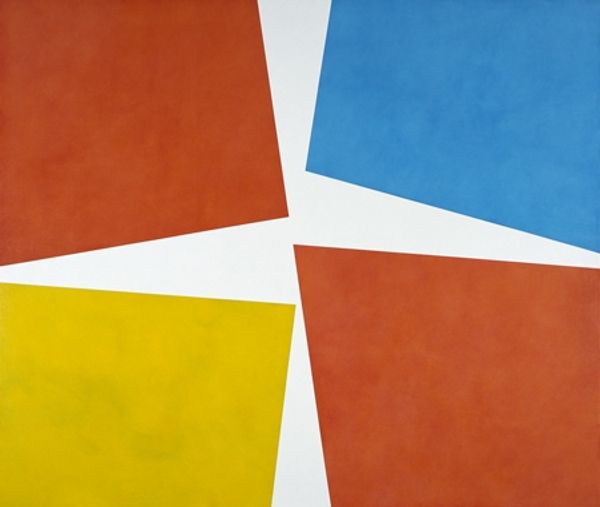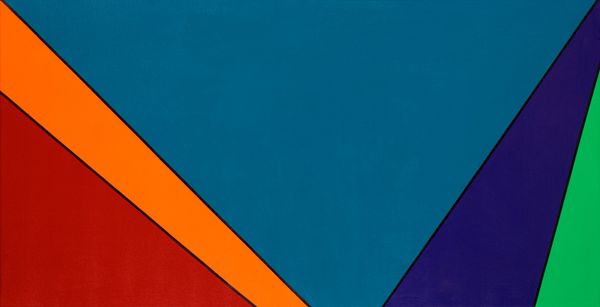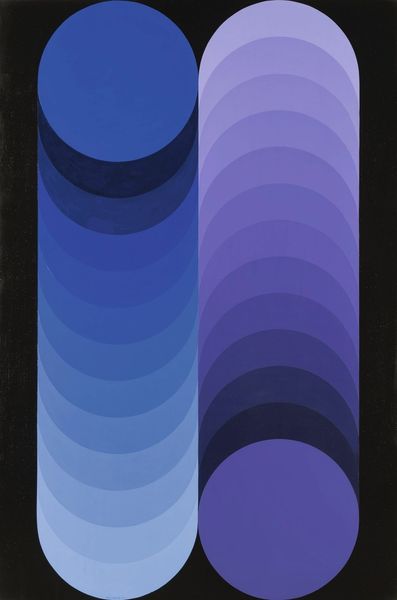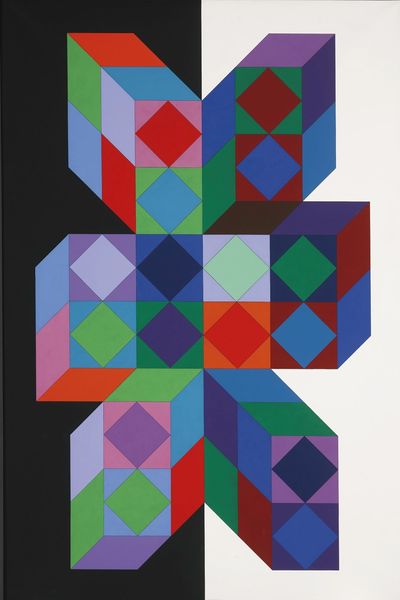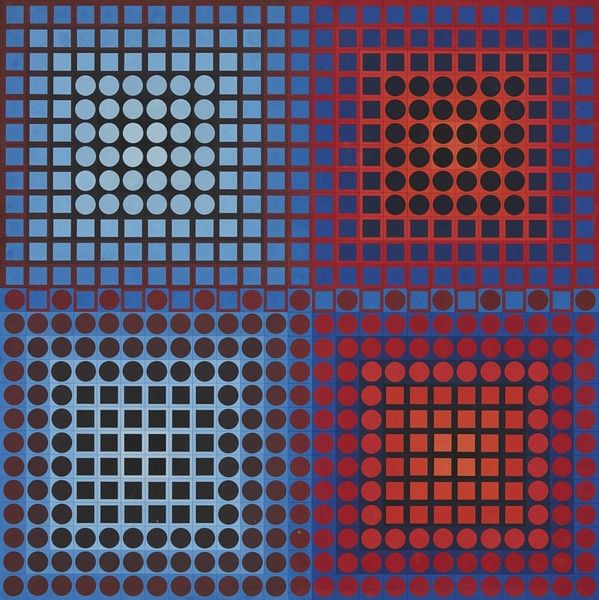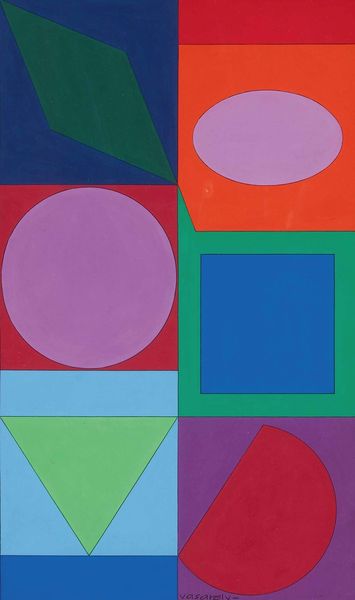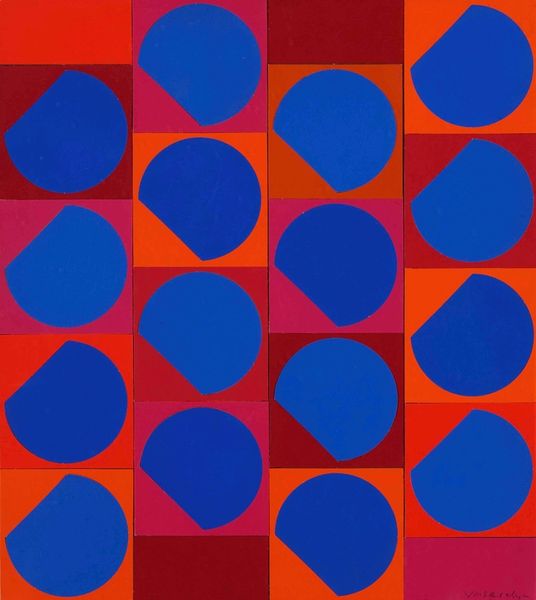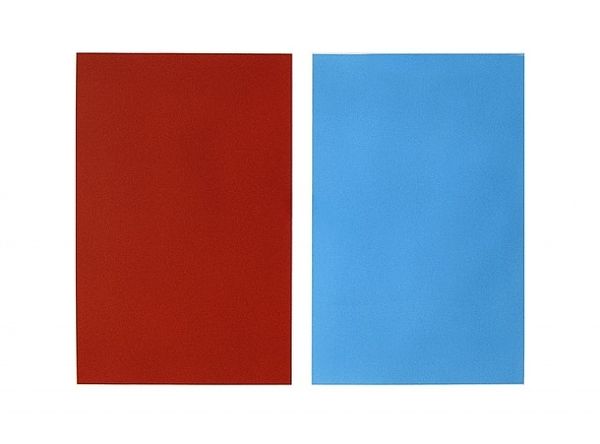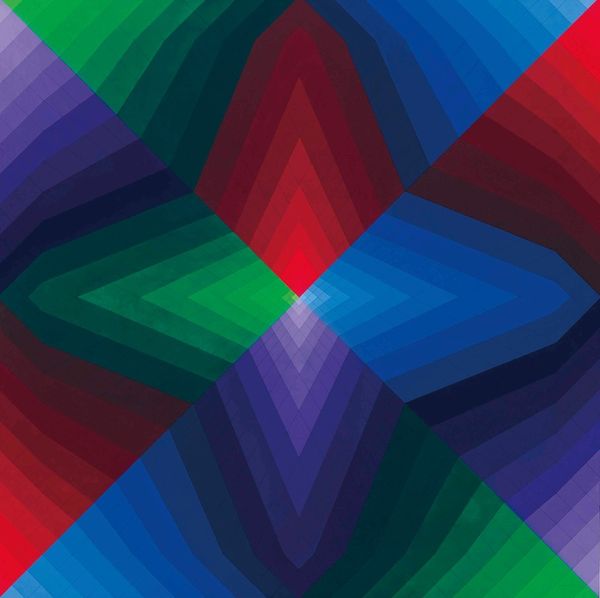
acrylic-paint
#
op-art
#
acrylic-paint
#
geometric
#
abstraction
#
modernism
Copyright: Modern Artists: Artvee
Editor: This is "Biocta-T" by Victor Vasarely, from 1976. It's an acrylic painting featuring these vibrant, concentric octagons in shades of red and blue. The repetition almost has a hypnotic effect... I’m curious, what's your take on this piece? Curator: It's interesting to consider this piece within the context of the mid-70s. Vasarely, a key figure in Op Art, presents us with what appears to be purely formal geometry, yet his work resonated with a society grappling with anxieties about technology and perception. Doesn't this calculated use of color and form, creating a seemingly endless vortex, echo a kind of systemic logic we see reflected in structures of power? How does it make you feel, considering it as potentially a comment on control? Editor: I see what you mean! It’s not just pretty shapes but maybe a reflection on how we perceive constructed realities. I hadn’t considered that element of societal commentary. Curator: Absolutely. The illusion of depth pulls you in, doesn’t it? Is this not analogous to the way ideology can function, drawing us into pre-determined perspectives? The binary color scheme further suggests a world divided, perhaps reflecting the political polarities of the Cold War era. Does this resonate with your understanding? Editor: Definitely, the limited palette reinforces that sense of division and control. Knowing Vasarely, would he have intended those readings? Curator: It's up for debate! Some see pure visual play; others see critique. However, Op Art's challenge to our visual stability aligns it with the deconstructionist impulse of the era. It encourages questioning. Do you think abstract art has the potential to affect concrete social change? Editor: It's fascinating to think about abstract art having concrete political implications. It makes you think beyond the surface! Curator: Exactly. Perhaps "Biocta-T" is not just about optical illusion but also a commentary on our relationship with power structures, and our roles within them. Editor: Well, I definitely won’t look at Op Art the same way again. Thank you for opening up so much more than meets the eye.
Comments
No comments
Be the first to comment and join the conversation on the ultimate creative platform.
